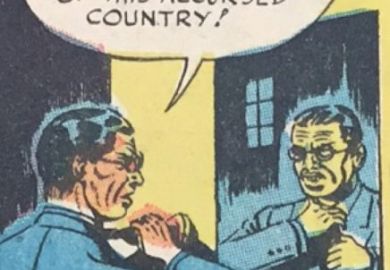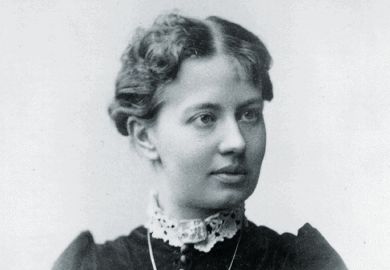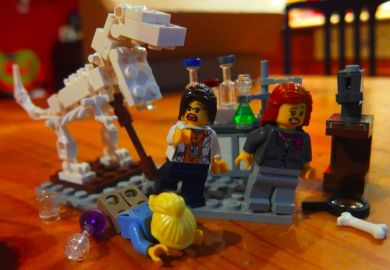The professors have names such as Bumblebrain, Clickity Klunk, Dinglebat, Doodle, Dribble and Hogwash, while another has “enough university degrees to paper her toilet walls”. Meanwhile, an evil Doctor Sock tries to force a cupcake to be his bride…
Welcome to the world of academia as represented in children’s illustrated books, a world to which Melissa Terras – professor of digital cultural heritage at the University of Edinburgh – has devoted a full-length study.
Although she began Picture-Book Professors: Academia and Children’s Books as “a fun exploration of what my children were seeing about academia as they were exposed to media”, she soon realised that “the tropes that were coming out” raised some extremely serious issues.
“Children’s literature is so conservative,” she told Times Higher Education. What one author has described as “rummaging around in the dressing-up box of children’s literature” has meant that “the tropes are now fixed: old white men who are mad – and, after the Second World War, dangerous as well, because they want to blow up the world. You can drop a mad professor right into a book without any explanation.”
Female academics of any kind remain notable by their absence. Professor Terras surveyed the characters in 289 different children’s illustrated books published between 1850 and 2014, and she was astonished to discover that “the first female professor with a name appears in 1991”.
Even today, when one might expect about 20 per cent of scholarly characters to be women in order to reflect the actual state of the academy, the proportion in the books is about 10 per cent. Just three of all the academics featured were clearly from ethnic minorities.
Because picture books are often read aloud to children, Professor Terras went on, they give children a forceful lesson about “who gets to have intellectual power in our society…Adults you trust and love are showing you these embedded structures, which are skewed against minorities and women, right from a very early age.”
Where books “treat madness as common in academics” and ridicule them for it, this is not only an “artistically lazy” cliché but also presents a callously comic image of mental illness. Professor Terras also highlighted broader questions about “how we train children not to think being smart is cool”.
Her monograph is published alongside an open-access anthology titled The Professor in Children's Literature, which “draws together 26 short stories that depict the academy in children’s literature published between 1871 and 1933, showing that [the notion] ‘we’ve had enough of experts’ is something we’ve been teaching our children for 150 years”.
If we live in a culture that distrusts intellectual attainment, Professor Terras added, “it’s hard not to read that back into children’s literature and to say, ‘We’ve been teaching people this for generations. We need to call this stuff out, because folks like Donald Trump aren’t going to.”
Register to continue
Why register?
- Registration is free and only takes a moment
- Once registered, you can read 3 articles a month
- Sign up for our newsletter
Subscribe
Or subscribe for unlimited access to:
- Unlimited access to news, views, insights & reviews
- Digital editions
- Digital access to THE’s university and college rankings analysis
Already registered or a current subscriber?








